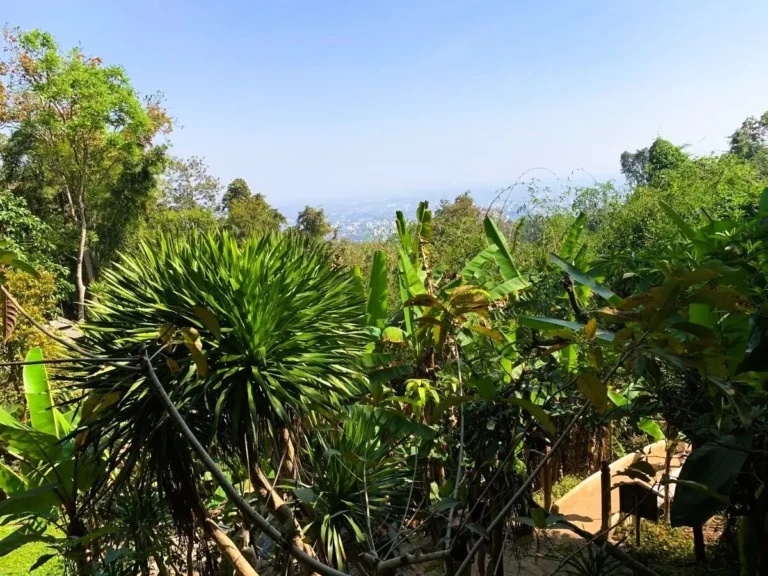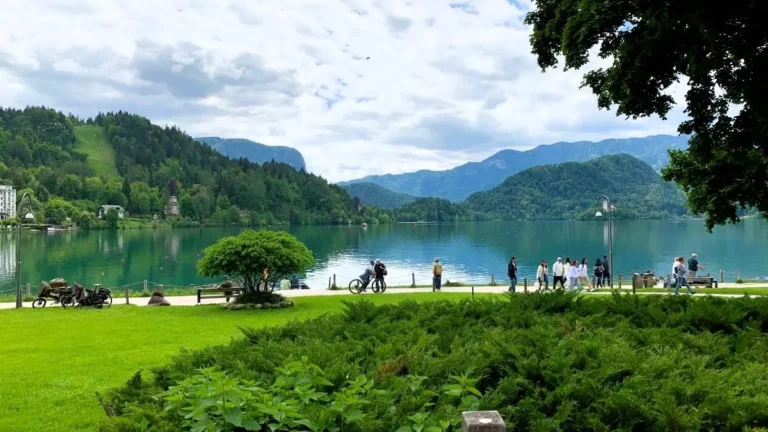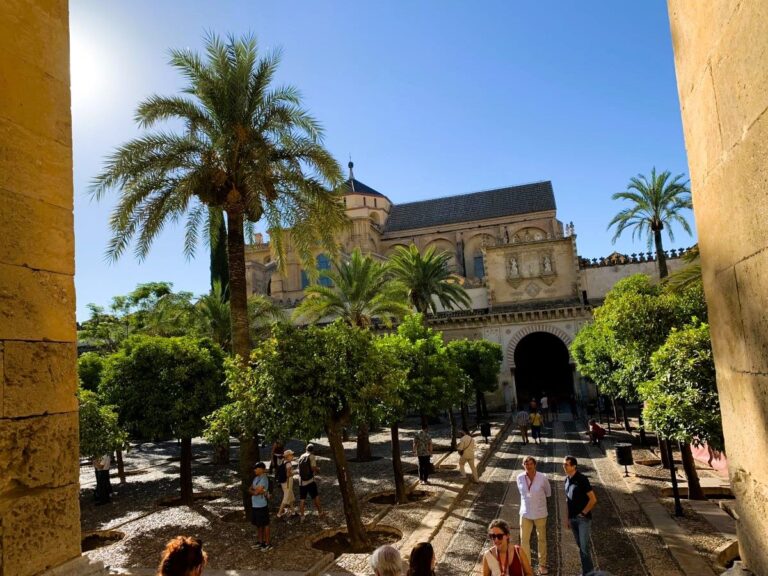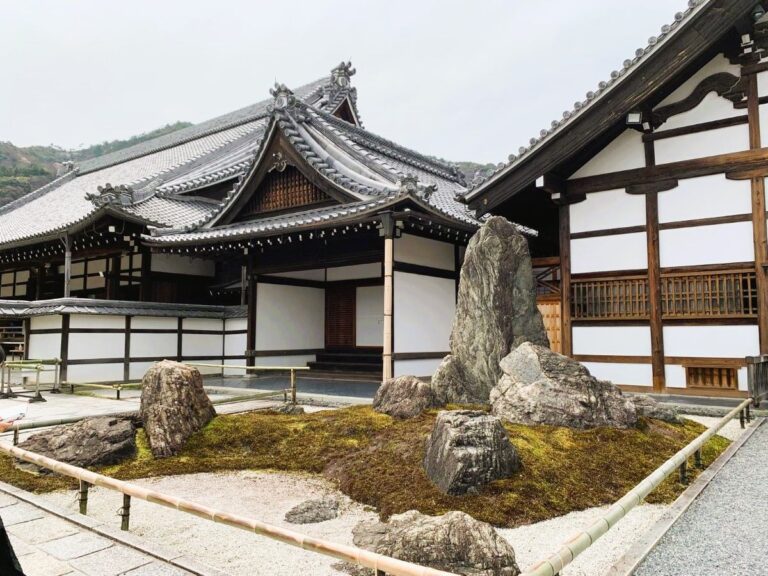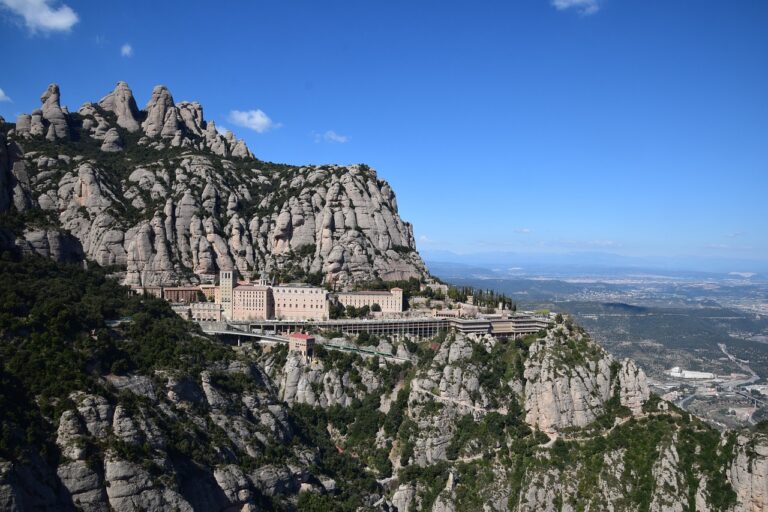Discover the Vibrant Coffee Culture in Sarajevo: Savor Every Sip
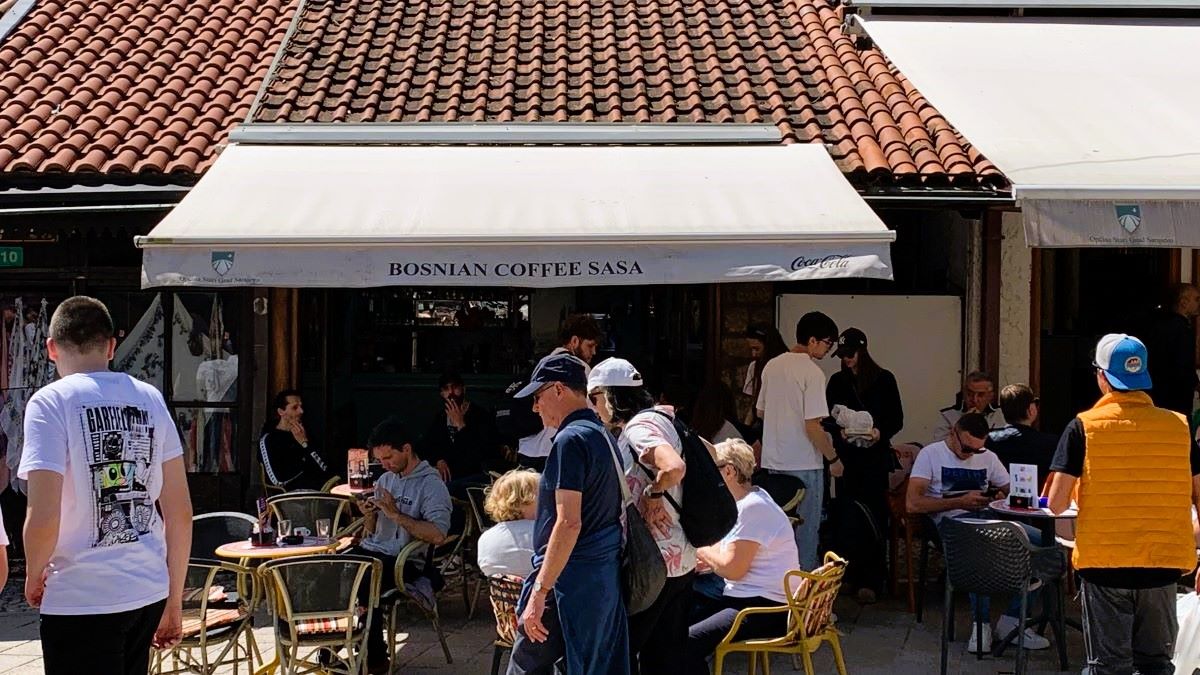
The coffee culture in Sarajevo is a rich and integral part of the city’s identity, shaped by centuries of Ottoman influence and a strong sense of community.
When you walk the cobbled streets of Sarajevo, one thing stands out almost everywhere—coffee. It’s a ritual, a tradition, and one of the city’s simple joys. You’ll love the Bosnian coffee!
Locals gather with friends or family, savoring every tiny cup. This isn’t the quick coffee you grab on your way to work. Sarajevo’s coffee culture is slow, rich, and full of stories. Let’s dive into what makes coffee in Sarajevo so special, how it came to be such a big part of life, and where you should try it yourself.
Related Posts:
- Bosnia & Herzegovina Travel Guide [2025]: History, Highlights, and Essential Tips for Tourists
- Is Sarajevo Worth Visiting? Here’s the Real Deal
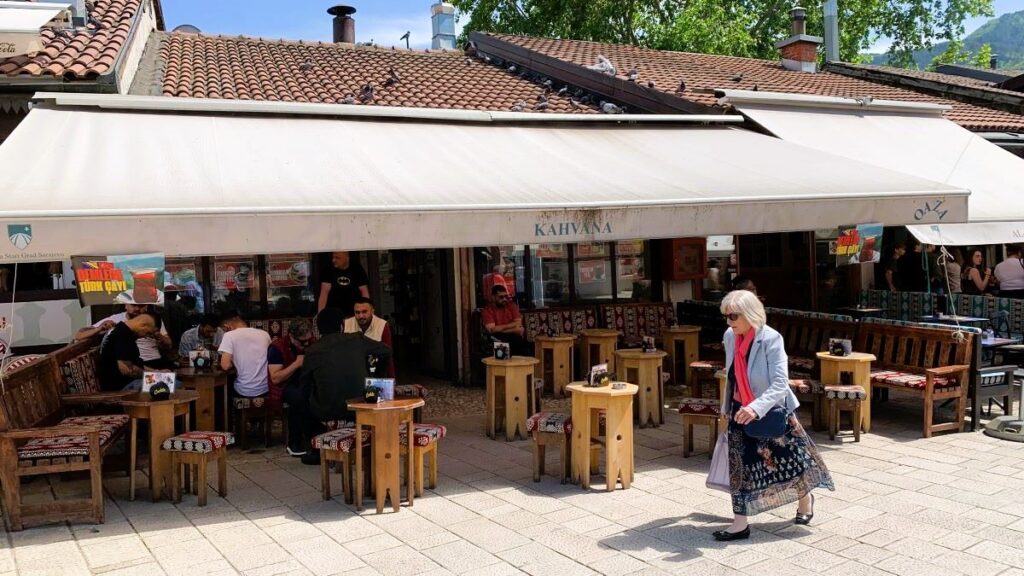
A Brief History: Coffee’s Journey to Sarajevo
Where did the coffee culture in Sarajevo come from?
Coffee didn’t start in Sarajevo, but the city sure made it its own. The drink first came to the Balkans in the 15th century, brought by Ottoman traders.
The first cafes popped up in Istanbul, then spread west. By the 16th century, Sarajevo had its own coffee houses. These places weren’t just serving caffeine—they brought people together for gossip, deals, and debates.
Back then, Sarajevo was on major trade routes. Coffee flowed into the city and quickly became the drink of choice. Soon, every neighborhood had its own café, called a “kafana.” Some were so old and respected, locals still talk about them today. Even now, the heart of the old city—Baščaršija—buzzes with coffee shops tucked between mosques, bakeries, and markets.
Fun Fact:
“Kafa” (coffee) is sometimes called “Bosanska kafa” here. It means “Bosnian coffee,” and it signals something unique.
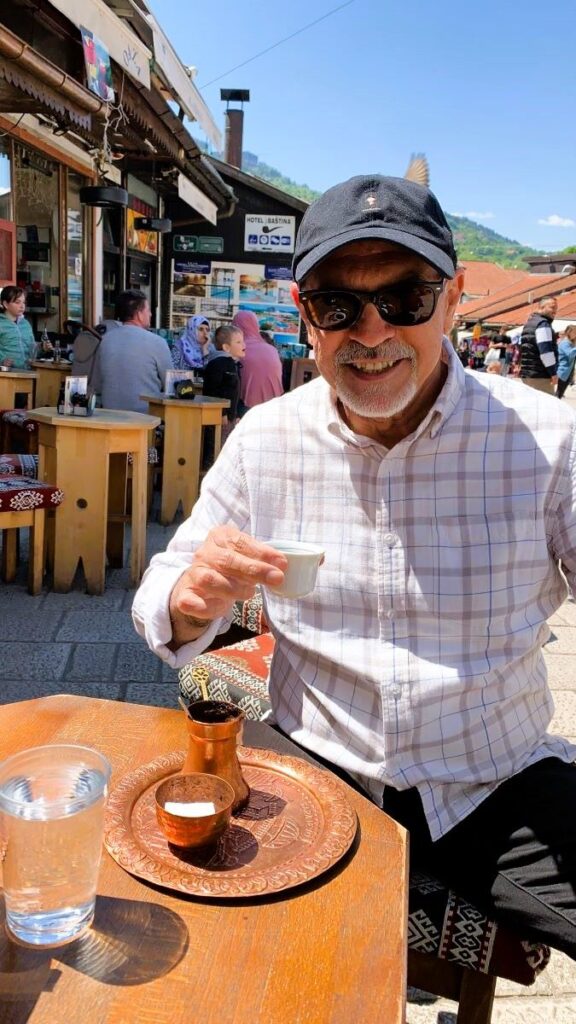

More Than a Drink: Sarajevo’s Daily Ritual
Coffee in Sarajevo isn’t a quick fix. It’s a way of slowing life down. Friends might sit for hours, stirring and sipping from small cups. Locals say, “If you’re coming only for coffee, you’re coming without a reason.” It means coffee is about much more than just drinking—it’s about connection.
Mornings start with coffee, sure, but so do meetings, visits, and even apologies. If someone invites you for coffee, they want quality time with you.
How Bosnian Coffee Is Made and Served
Bosnian coffee has its own style. It’s similar to Turkish coffee but with its own twist. Locals use a small copper pot called a “džezva.” The process might look simple, but it takes patience and practice.
Step-by-Step: Make and Enjoy Bosnian Coffee
- Start with cold water. Measure the right amount into the džezva, usually about one cup per person.
- Add ground coffee. The grounds are very fine, even finer than espresso. Use about one heaping teaspoon per cup.
- Add sugar (optional). Some add it while cooking, others sweeten their cup later.
- Heat slowly. Place the džezva over low heat, letting the coffee foam up. Don’t let it boil over!
- Skim the foam. Spoon some foam into each serving cup. Then return the džezva to the heat, let it foam a bit more, and pour it out.
- Serve with a sweet treat. Traditional service includes a rahat lokum (Turkish delight), a glass of cold water, and sometimes a sugar cube.
Pro Tip:
Don’t stir once the coffee is poured. Let the grounds settle at the bottom so your last sip isn’t gritty.
Etiquette: Coffee with Respect
Sarajevo’s coffee has unwritten rules. These make every cup feel like an event.
- Take Your Time. Drinking fast is seen as rude or rushed.
- Don’t Stir the Grounds. Let them settle and enjoy the smooth top layer.
- Never Decline Outright. If you won’t drink coffee, it’s polite to explain why.
- Offer Water First. Always have a small glass of water before your coffee to clear your palate.
- Sweet Treats are Must. Rahat lokum isn’t just decoration—it balances the taste.
Local Saying:
“Hajde na kahvu” means “Let’s go for coffee.” It’s an open invitation for friendship.
For more on Bosnian Coffee, click here
Bosnian Coffee vs. Turkish and Espresso
At first glance, Bosnian coffee looks like Turkish coffee. Both use similar pots and grounds. But there’s a difference in flavor and ritual. Turkish coffee is often stronger and thicker, sometimes spiced with cardamom. Bosnian coffee is smoother, gentler, and more about enjoyment than a caffeine hit.
Espresso is quick—made in seconds and gone in a gulp. Bosnian coffee is slow. The whole process, from brewing to sipping, can take up to an hour if you do it right.
Sarajevo’s Famous Coffee Shops: Where to Go
The city has hundreds of coffee spots. Some are modern, many are old-fashioned, and all are waiting to be discovered. Here are a few popular coffee shops of Sarajevo:
1. Čajdžinica Džirlo
- Location: Kovači, near the center of Baščaršija
- Atmosphere: Cozy, colorful, and packed with character
- What’s Special: Known for its wide tea and coffee menu. The owner loves sharing stories about Bosnian coffee culture, making every visit unforgettable.
- Try: Traditional Bosnian coffee with rahat lokum. The presentation is beautiful.
2. Ministry of Ćejf
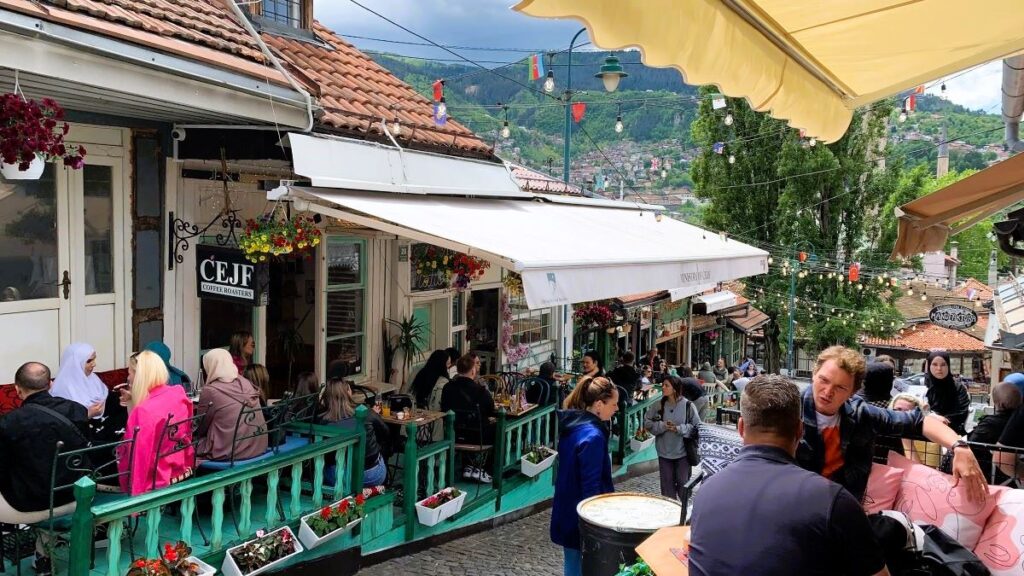
- Location: Obala Kulina bana 33
- Atmosphere: Laid-back, hip décor, perfect for people-watching
- What’s Special: “Ćejf” means pleasure in the little things. Here, you feel it in every corner.
- Try: Sit outside with coffee and a slice of cake. Time almost stands still.
3. Kafana Sevdah Art House
- Location: Hadžići, Baščaršija
- Atmosphere: Old Sarajevo charm, filled with traditional music and art
- What’s Special: Live sevdah music sets the mood. The courtyard is a hidden gem on summer nights.
- Try: Order coffee and listen to the soft tunes drifting through the air.
4. Caffe Tito
- Location: Zmaja od Bosne bb, next to the History Museum
- Atmosphere: Quirky, filled with memorabilia from former Yugoslavia
- What’s Special: Sit indoors with Tito-era antiques or outside among old tanks. Fun, relaxed, and totally unique.
- Try: Classic espresso or Bosnian coffee. People love the vintage vibe.
5. Miris Dunja
- Location: Kundurdžiluk bb, Baščaršija
- Atmosphere: Warm and welcoming, with a terrace tucked beside the old city walls
- What’s Special: Homey feel, friendly staff, and fresh pastries in the morning.
- Try: Bosnian coffee with a slice of homemade pie. Locals swear by it.
Local Tips: Savor Your Sarajevo Coffee
- Ask for “Kafa s rahatlokum.” It means you want Turkish delight with your coffee.
- Plan to chat. Locals love a good story or debate over coffee.
- Take pictures, but don’t rush. Staff appreciate when you respect the slow pace.
- Visit early or late. Mornings and evenings are magical in Sarajevo’s coffee shops.
- Try different spots. Each café has its own atmosphere, crowd, and twist on tradition.
Fun Fact:
The world’s first documented coffee shop was in Istanbul, but Sarajevo’s oldest, Morića Han, has served travelers and traders for centuries!
Sarajevo Coffee Culture: Why It Matters
Coffee in Sarajevo is more than caffeine. It bridges generations, brings friends together, and weaves through every festival and sad time alike. Sitting for coffee is how locals reflect, share news, and find comfort in routine. For travelers, part of understanding the city is joining in.
So when you visit Sarajevo, don’t just check off museums or sights. Sit down, order a kafa, and let the world slow down for a while. As locals say, coffee is best when you have nowhere else you need to be.
Join the Conversation
Have you ever tried Bosnian coffee, or does your city have its own traditions? What’s your best coffee memory, or do you enjoy a special way of serving it? Share your stories or favorite coffee shop from anywhere in the world below—I’d love to hear what brings people together over a cup.
“Dobar dan i dobra kafa!” – Good day and good coffee to you!
Recent Posts:
-
The Best Florence 3-Day Itinerary For First Timers (Landmarks, Views, And Food)
Planning a trip to Florence? Awesome! You’re in for a treat! Florence packs centuries of art, culture, and history into streets that are super easy to wander on foot. This Florence 3 day itinerary is built for first-time visitors who want the big sights, plus time to eat well, shop a little, and wander without…
-
Your Ultimate 3-Day Itinerary in Rome (First-Time Visit Guide)
Arriving in Rome, the Eternal City, for the first time feels like stepping into a living history book. I’m not kidding. Everywhere you turn you find ancient ruins, renaissance churches, and fountains, sometimes sharing the same charming streets. The city buzzes with energy, from the scooters zipping by to the lively piazzas filled with people…
-
The Ultimate Italy Travel Guide for First‑Time Visitors (Simple, Honest Tips)
Italy is one of those places that lives in your head long before you land. Ancient ruins, quiet churches, busy piazzas, long dinners, and trains that carry you from city to city like scenes in a film. When friends ask me where they should go on their first big trip to Europe, Italy is usually…
-
Travel Chiang Mai, Thailand: A Calm Base for Temples, Markets, and Food
Your Ultimate Travel Chiang Mai Thailand Guide Chiang Mai sits in a green valley in northern Thailand, ringed by low mountains and crowned by temples that have been there for centuries. Key Takeaways: This Travel Guide to Chiang Mai, Thailand also shares a simple 3-day plan you can follow without stress. The Old City, with…
-
Lake Bled Day Trip: The Perfect First-Time Adventure from Ljubljana
Welcome! If you’re spending time in Ljubljana and want to experience Slovenia’s most magical landscapes, a Lake Bled day trip from Ljubljana is an easy choice. With its glacial blue water, Lake Bled Island at its center, and Bled Castle perched high on the cliffs, this spot looks straight out of a fairytale—no need for…
-
Best Things to Do in Ljubljana, Slovenia (First-Time Visitor’s Guide)
Welcome! Thank you for visiting my blog about the best things to do in Ljubljana! In this guide I’ll share my own favorite spots and handy tips, best places to eat and some local insights you might not find elsewhere. Ljubljana, the charming capital of Slovenia, is stunning! The architecture is breathtaking! I promise you,…




